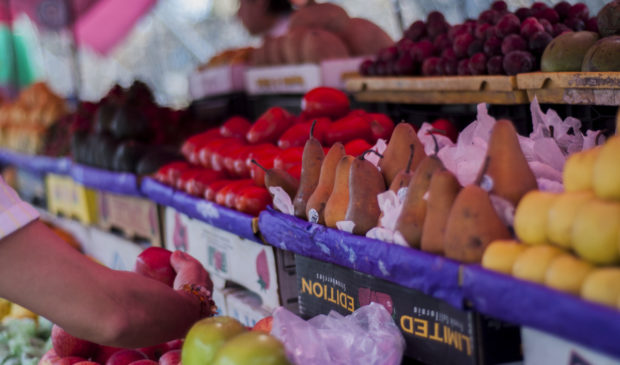
Wednesday, July 17, 2024 Amy Smith
City council members heard a presentation Thursday on a wide-ranging food plan aimed at eliminating historical barriers to food access in Austin and Travis County.
If all goes according to plan, the proposal will be sent back to the City Council for possible adoption on Aug. 29. The Travis County Commission is scheduled to hear about the plan on Aug. 8.
The food plan grew out of a City Council resolution passed in June 2021 calling for the development of a five-year roadmap to ensure all residents have access to nutritious, affordable food. Travis County formally joined the effort the following year. The City Council’s action was a direct response to the severe food insecurity issues in Austin and Travis County that became even more apparent during the COVID-19 pandemic and two severe winter storms.
Edwin Marty, food policy manager for the city’s Office of Sustainability, and Rachel Kopf, planning manager for Travis County Health and Human Services, presented the food plan, which is the result of a community-driven process that gathered input from residents, community groups and other city departments.
Based on that input, the plan’s drafters developed a set of priorities, including acquiring and preserving farmland to expand local food production, increasing the number of farms owned by disadvantaged farmers, improving the lives of farm and food workers, building more resilient and sustainable local supply chains, increasing the number of food retail outlets on the Eastern Crescent, and divert food waste from landfill.
“Now may be a critical time to reassess and protect the remaining farmland in our region. … It’s being developed at an unprecedented rate,” Marty said. “We need a clear strategy for protecting farmland.”
Farmland not only provides food, “it also provides incredible green infrastructure benefits and economic benefits,” he said. He emphasized the fact that local residents want to combine agriculture and housing.
“Rather than choosing between agriculture and housing, we have a great opportunity to blend the two and create an agriculture-centered community,” he said.
Marty noted that farmland in Travis County is declining rapidly. Citing the 2022 Agriculture Census, the plan states that Travis County has 870 privately owned and operated farms covering more than 198,000 acres. That’s a 21 percent decline in the number of farms and an 11 percent decline in acreage since 2017.
“Despite a strong and growing demand for locally produced food in the Austin area, only approximately 0.06 percent of the food consumed in Travis County is produced locally,” the plan states. Most of the food consumed in Austin is produced elsewhere and shipped here.
Marty said the food program is relatively new to the agency.
“Ten years ago, food plans at the city or county level were virtually nonexistent,” he says, “Today, there are probably 10 to 12 food plans across the country, and we’re really excited to be at the forefront of creating these visionary, community-driven documents. So, like many plans, the food plan is simply a vision of the direction the community wants us to go.”
Even though the city and county are expected to adopt a food plan, implementing its goals will likely prove more difficult due to the city’s growing number of competing priorities and the current lack of available funding.
City Councilwoman Allison Alter said she would like to see funding for the food program added to the comprehensive climate bond package the City Council is expected to approve at its Thursday meeting.
The Austin Monitor relies on community donations to operate. While our reporting sometimes includes mention of donors, we are careful to be transparent and separate our business and editorial efforts. A full list of our donors can be found here, and our code of ethics can be found here.
You are a community leader
We’re honored that you count on us for serious, in-depth news. As you all know, strong communities need passionate, local, watchdog journalism. We’re here for you, and we always will be. So why not take the next powerful step and support our nonprofit news organization?


